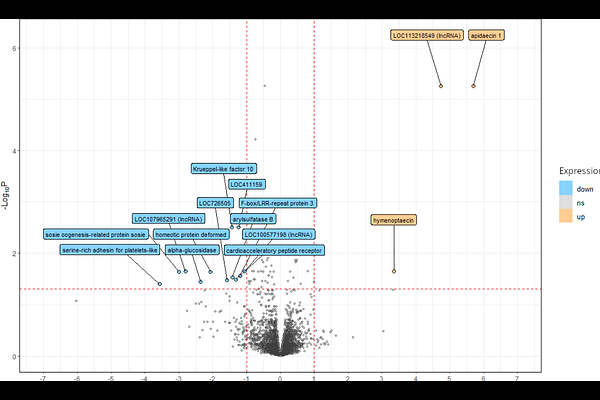Neurotranscriptomic profiling of DWV-infected honey bee foragers with different cognitive abilities

Neurotranscriptomic profiling of DWV-infected honey bee foragers with different cognitive abilities
Loughran, S. E.; Manfredini, F.; Bowman, A. S.; Dingle, L.
AbstractHoney bees (Apis mellifera) provide important ecosystem services to both natural and hu-man-managed environments, but are increasingly threatened by a variety of pathogens, the most common of which is deformed wing virus (DWV). DWV is known to replicate in the honey bee brain and has been documented as both improving and impairing olfactory learning and memory. We examined the transcriptomic response of the honey bee mushroom bodies--an area of the insect brain associated with higher cognitive functions--in bees with naturally occurring DWV infections who varied in their ability to perform an associative learning task. RNA-seq analysis detected increased expression of genes involved in the immune response, including important antimicrobial peptides (AMPs) such as hymenoptaecin, apidaecin, and abaecin, and the down-regulation of lysozyme, PPO, and other genes associated with responses to a range of stressors. Additionally, gene ontology (GO) enrichment analysis revealed overrepresentation of key bio-logical processes which form part of the immune response. We also noted significant differential expression of long non-coding RNAs (lncRNAs) presumed to be acting in a regulatory manner, and used these lncRNAs to construct gene regulatory networks (GRNs). Strikingly, in contrast to previous studies on bees with artificially-induced infections that have examined viral loads in the abdomen and non-specific areas of the brain, no correlation between DWV load in the mushroom bodies and cognitive function was noted. This highlights the complexity of host-pathogen inter-actions in honey bee neural tissues and the benefits of a spatially-refined approach to brain transcriptomics in naturally-occurring infections.